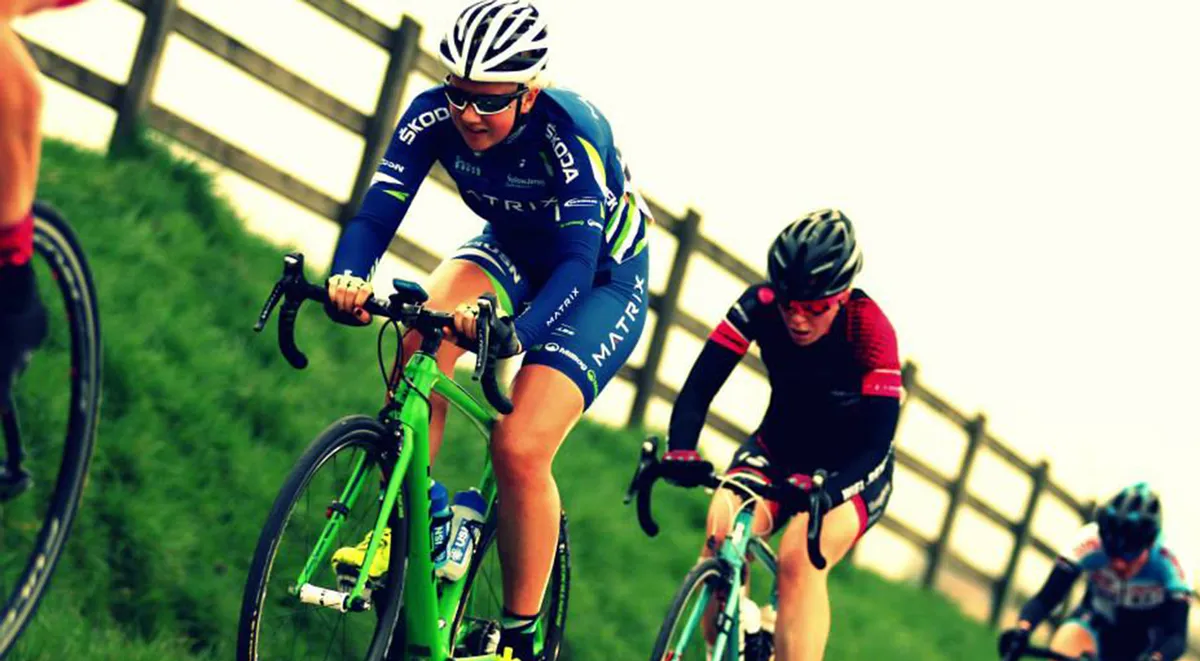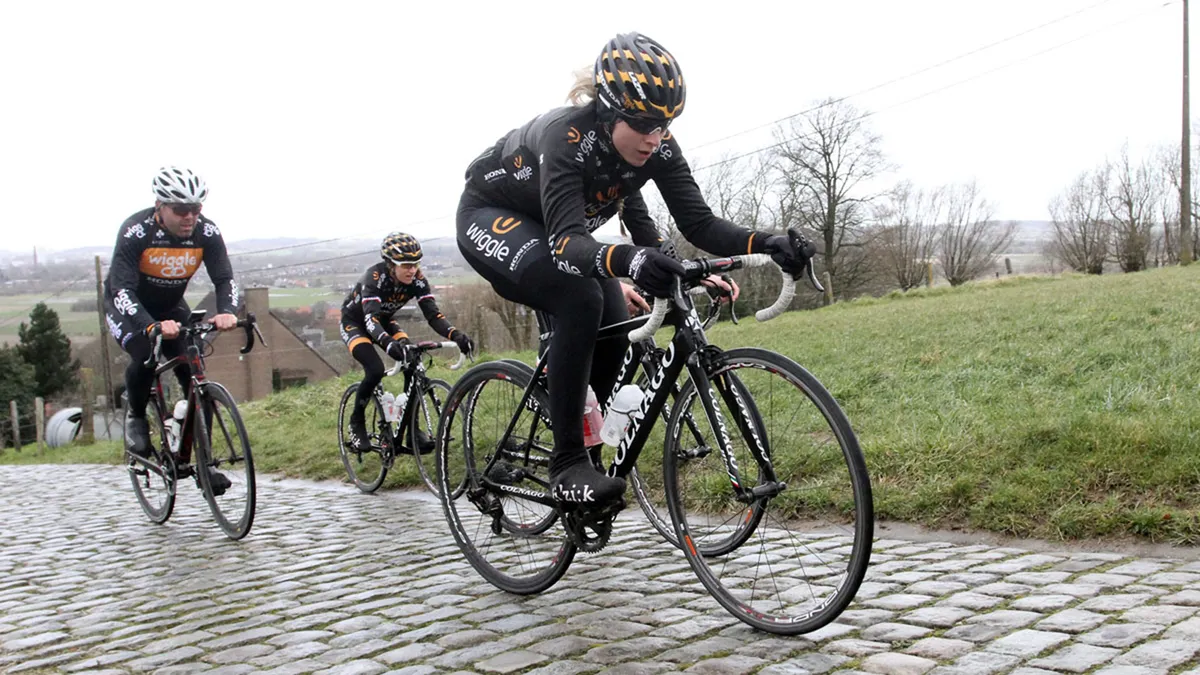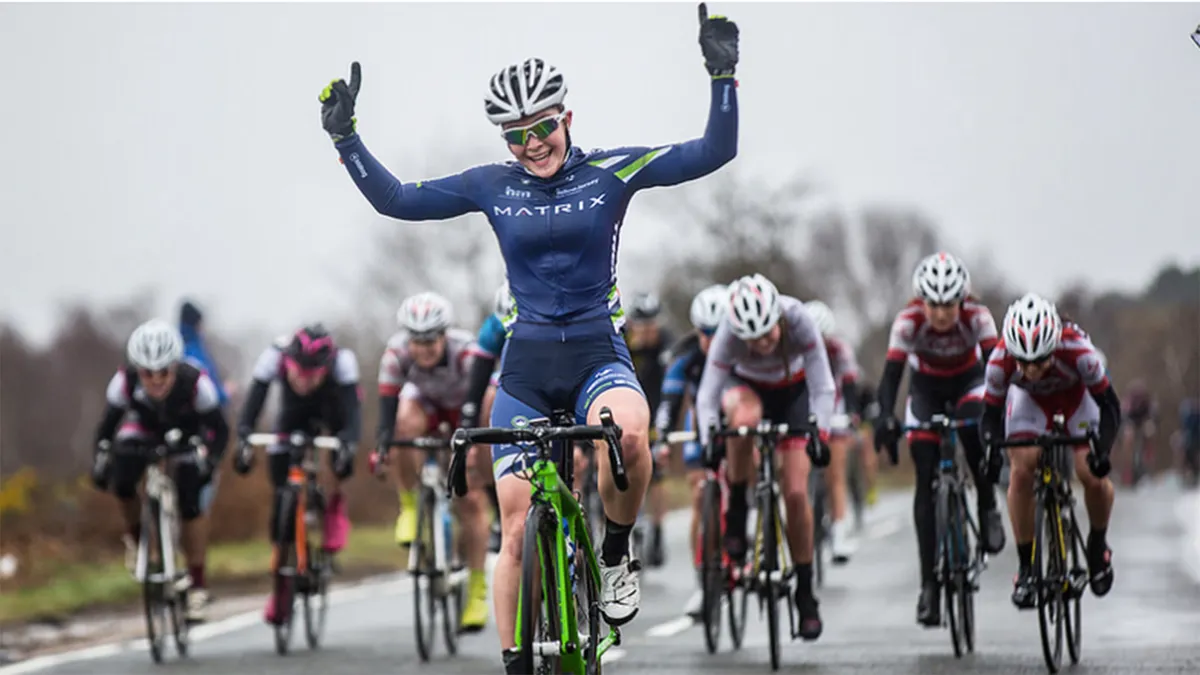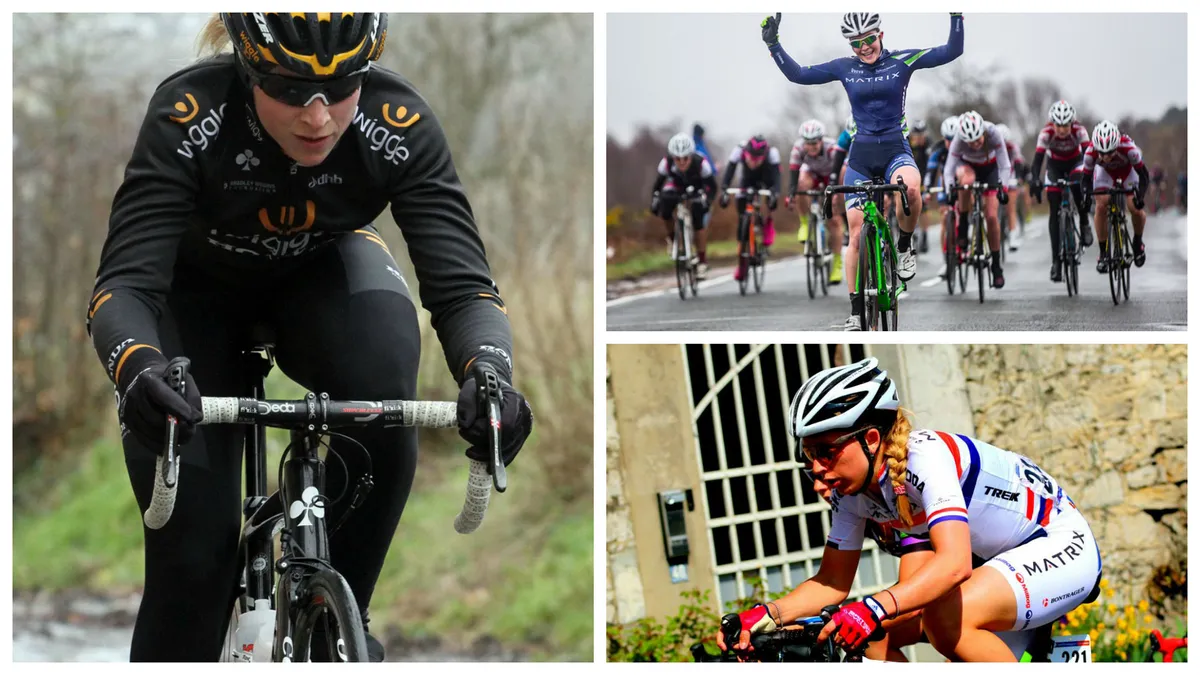If you want to be the best, it usually pays to listen to others who are at the top of their game. BikeRadar spoke to some of the top figures in women's cycling — including Tiffany Cromwell, Chloe Hosking, Dani King and Laura Kenny — for their combined wealth of knowledge and experience.
From climbing tips to staying motivated when training, and from fuelling effectively to preparing mentally, these training tips from the professionals will help you become a fitter, faster, better cyclist.
1. Climb stronger
“A great way to get stronger on hills is by doing strength and endurance training,” says Canyon-SRAM Pro Cycling’s Tiffany Cromwell. “This is where you ride seated up a climb in a bigger gear than you normally would, with around 50–60rpm. This can be done for anything between five and 20 minutes. Make sure you give yourself plenty of recovery riding with an easier gear afterwards."
Alé Cipollini's Chloe Hosking advises mixing up your hill training, focusing not just on long climbs but also on short, steep ones. “An effective session I do on a punchy climb is max, max, max one-minute efforts.”

Ex-Matrix Fitness Pro Cycling’s Penny Rowson reckons that rather than avoiding hills you should seek them out. “As you improve, add more climbing into your rides and make it fun by adding variety such as riding in and out of the saddle, or change pace and cadence — and if you feel like it, go for a Strava segment!”
Rowson’s ex-team-mate Mel Lowther, who now rides for Team Breeze, says you shouldn’t be afraid of blowing up on climbs in training. “Everyone does it and it's how you learn the kind of pace you can ride at — and also how hard you can push yourself.”
2. Descend faster
“When descending, always cover your brakes and remember not to go in too hard with the front brake,” says Valentina Scandolara who rides for WM3 Pro Cycling.
“Try to keep your eyes way in front and try to brake before a corner rather than in it. Start to plan your line before hitting the corner. If the road is closed, use all the width of the road, then cut the corner in the inside, and go wide again, trying to not wash out too much speed. Then, when out, stand up and push on the pedals to get speed back again.
"Use the right gear — not too light otherwise you’ll waste energy and lose balance, but not too hard or you won't be able to sprint out of the corners. Remember to balance yourself in the corners — your outside foot should be down and you should put some weight on it while your bike and bodyweight are leaning into the corner.”
Penny Rowson suggests gaining basic skills by first practising on the flat. “Lean around corners, gradually gaining more speed, and get to grips with how the bike flows, your stopping distance, picking the apex and looking ahead,” she says. “Then once you’re confident, transition these skills to downhills.”
3. Make every ride count
“Look at your time frame,” advises Wiggle High5’s Nettie Edmondson. “If you have until midday, for example, do a long, normal-paced road ride. We call these rides 'base km' or 'base miles' to work on your overall fitness. But if you only have 30 minutes to and from work, why not time yourself and make it a hard effort to get some quality in? Make sure you allow yourself at least five minutes to cool down after your effort.”
Make sure every ride has a purpose, whether that’s intensity, endurance or just enjoyment
Ex-pro rider Mara Abbott, formerly of Wiggle High5, says you should make sure every ride has a purpose, whether that’s intensity, endurance or just enjoyment. “If you know the purpose of your ride, you can make sure you stay focused on that intention and make the most of the time on the bike.”
4. Ride harder for longer
“Make sure you build up your capacity for long rides slowly,” says Nettie Edmondson. “Gradually increase your long rides by 30 minutes if you’re coping okay. Once you’re comfortable with a certain distance, you can then add a bit more intensity [via] a few efforts here or there. Perhaps go out with a group of stronger riders and start off by trying to last one-and-a-half hours with them. Then increase that to two hours, two-and-a-half hours and so on.”
Mara Abbott says being able to ride for longer is also about learning to pace yourself — and fuelling regularly. “Start easy and keep eating more than you think you should. If you're worried you can't complete a distance, do smaller loops close to home so you can stop if you need to. I find when I have the back-out option of going home I rarely take it, but the comfort gives me confidence to try more things than I might otherwise!”
5. Improve your bike handling

Team WNT Pro Cycling's Eileen Roe believes cyclocross is the best way to learn better bike handling skills. “In cyclocross you have to learn to feel the bike moving underneath you — in sand and in mud, whether it’s wet or hard. If you’re able to handle a cyclocross bike in a race and not crash, then it should be a lot easier to control your bike on the road.”
6. Ride safely in a bunch
“Know your limits,” says Cyclance Pro Cycling's Dani King. “Only ride as close to the wheel in front as you feel comfortable. I’ve seen many a rider crash in training, which is often down to riders getting carried away. Riding with experienced riders will help drill good technique and etiquette into you.”
Nettie Edmondson says you need to pay attention at all times. “Accidents happen when people are distracted, so make sure you're focusing on the wheel in front, even while talking to the person beside you. You don't have to maintain eye contact while out on the bike! Look ahead if you can, in front of the bunch. This will give you more warning if an obstacle is coming. Be vocal, make sure you yell or point out an obstacle or hazard if it's likely to affect the bunch.”
7. Stay motivated
“Make sure you have a realistic plan of what training you want to do each week and keep it different and interesting — know why you're doing each session,” advises Drops Cycling Team's Lucy Shaw. “Try to organise rides with other people — it’ll push you more and having company for longer rides is more fun!”
Dani King says you must buy into your training and truly believe in it. “This is what motivates me, knowing the effort I’m making is resulting in gains.”
But if you don’t feel motivated all the time you shouldn’t beat yourself up about it, says Mara Abbott. “It isn't a failure if there’s a day you don't feel like going out on your bike. When you give yourself permission to be imperfect in that respect, I think it makes the whole game a lot easier!”

8. Prepare mentally
“I prepare mentally by planning my route, so I have a clear idea of what I am going to encounter on the ride,” says Canyon-SRAM’s Hannah Barnes. “Also, I make a big breakfast. That helps my mind a lot. When I have a big breakfast I know I have a big day ahead of me. I make my own ride food the night before, too, which gives me something to look forward to mid-ride."
Mel Lowther advises not to be fixated on the time when you’re out on a long ride. “Personally I never think about the hours before I go out, which makes it a lot easier to get out in the first place. Try to think of a landmark or town you could ride to that you wouldn't be able to get to in a shorter ride — it's something to achieve.”
When it comes to fighting the mental battle on a long climb, focus on time rather than distance
When it comes to fighting the mental battle on a long climb, Tiffany Cromwell says it’s better to focus on time rather than distance. “Break it down into five- or 10-minute segments to help get you through it. I find if I look too much at the distance, especially when you’re climbing a 10, 20, 30km or longer climb, those distances can tick by very slowly.
"Try to distract yourself by taking in the scenery, focusing on your breathing or pedalling technique, and keeping a still body – all of these things will not only help you become a more efficient climber, but you’ll also find the climb passes by quicker.
9. Fuel effectively
“I tend to have a bowl of cereal or porridge, followed by eggs or beans on toast before training,” says Matrix Pro Cycling’s Laura Kenny. “On the bike I have jam sandwiches as well as a few gels. I try to eat little and often, around two to three things an hour. Afterwards I try to get a pint of milk down the minute I step through the door, followed closely by lunch.”
Eileen Roe says whenever she drinks on the bike she also eats. “My coach tells me not to be scared to eat or take a gel within the first hour and drink a bottle an hour. Once your stores are gone just a small amount of dehydration reduces your performance by 10 per cent, which is massive, and the more dehydrated you become the worse your performance gets.”
10. Recover properly
“People forget how important rest is,” says Olympic champion Laura Kenny. “Rest is just as important as training days. I try to keep off my feet for most of the day. You want to be fresh and ready for the next day's training. The other thing you have to try to not forget is eating properly. It’s good to make sure you keep eating but eat the right things!”
Chloe Hosking says that recovery days don’t mean you always have to stay off the bike completely. I sometimes go on a mountain-bike ride to keep things fresh. I also stretch a lot, use compression clothing and get regular massages, all of which help my muscles recover.”
This article was updated on 9 January, 2018

